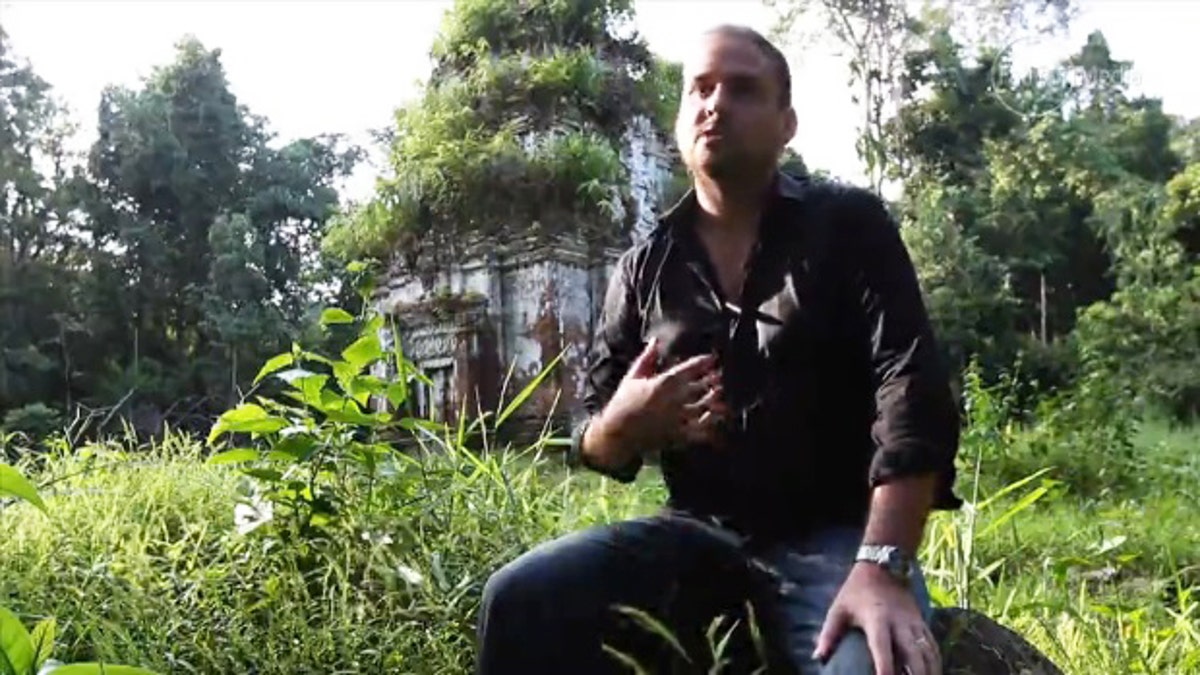
A screenshot from a video interview shows an archaeologist in the Siem Reap region before a relic of an entire Agkor city discovered using new maps acquired with LIDAR technology.
Archaeologists may have unearthed in the jungles of Cambodia an Atlantis-like city believed to be 1,200 years old.
The Sydney Morning Herald reports that an Australian-led team painstakingly peeled back the veil of land mine-borne danger and suffocating jungle previously shrouding the city of Mahendraparvata from discovery.
[pullquote]
"This is where it all began, giving rise to the Angkor civilization that everyone associates with Angkor Wat,'' Damian Evans, director of the University of Sydney's archaeological research center in Cambodia told The Herald, referencing the Hindu temple complex built in the 12th century that is the largest religious monument in the world.
''With this instrument -- bang -- all of a sudden we saw an immediate picture of an entire city that no one knew existed, which is just remarkable,'' Evans said.
- Body-double: lifelike android demoed at Global Futures conference
- History’s mysteries: 10 great archaeology puzzles
- Who’s iWatching? Apple reveals NSA requests for data
- Report: School district scanned children’s eyes for bus program without permission
- Scientists moving 15-ton magnet from New York to Chicago
That “instrument” reportedly refers to a new-fangled, airborne laser-scanning technology called LIDAR without which it seems the Mahendraparvata discovery would not have taken place.
As The Herald described it, the device, which has also been reportedly extensively used at Stonehenge, as well as at Mayan sites in Central America, “fires rapid laser pulses at the landscape (as) a sensor mounted on it measures the amount of time for each pulse to bounce back.
“By repeating the process,” the paper added, “the instrument builds up a complex picture of the terrain it is measuring.”
In the Mahendraparvata’s case, a helicopter scanned a swath of land in the remote Phnom Kulen Mountains that was – as The Herald wrote – “covered by jungle for centuries until loggers moved into the area in 1990s after years of civil war.”
Work reportedly continues on the ruins, but archaeologists have thus far uncovered close to 30 previously unrecorded temples, along with evidence of ancient canals, dykes and roads at the lost city.
And Evans tells The Herald that the Mahendraparvata site predates the world-famous Angkor Wat ruins, located about 19 miles (30 kilometers) away, by a historically significant 350-year epoch.